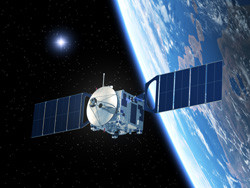Helping satellites stay in orbit
The International Space Station (ISS) orbits in the outer layer of the Earth's atmosphere, known as thermosphere, as do many LEO satellites. This region is exposed to extraordinary amounts of X-rays and ultraviolet radiation from the Sun causing temperatures to rise with altitude and eventually reaching more than 1 000 degrees Celsius. Moreover, conditions in the thermosphere can change rapidly as a result of extreme solar and geomagnetic activity. Because there is a short time lag between the geomagnetic forcing and the response in the thermosphere, near-real-time modelling is required for regular forecasts. Scientists addressed this need within the EU-funded 'Advanced thermosphere modelling for orbit prediction' (ATMOP) project. The ATMOP scientists developed a semi-empirical model of the thermosphere that is more accurate than the up-to-then available models. The predictive drag temperature modelDTM2013 is the final model. This was released in November 2013just before the end of the project. It was fitted to the most comprehensive data available and, more importantly, designed with the capability to assimilate near-real-time data. Specifically, DTM2013 was based on high-resolution data from the Challenging Minisatellite Payload (CHAMP), the Gravity Recovery and Climate Experiment (GRACE), and the Gravity Field and Steady-State Ocean Circulation Explorer (GOCE).US Air Force data on the daily means of the atmosphere's density at altitudes between 200 and 500 km were used for validation. Several model runs were carried out to test the model's performance and data integration. DTM2013 proved to have the best overall fit to the density data when taking both assimilated and independent data into account. On the other hand, its performance was unprecedented when compared to the pre-ATMOP DTM2009 model or the international reference atmosphere models JB2008 and NRLMSISE-00. ATMOP has provided Europe with the first near-real-time model to provide regular thermosphere 'now casts' and forecasts. DTM2013 is focused on orbital air drag, whose computation is essential for monitoring satellites in the upper atmosphere. It is expected to help keep space assets in orbit and avoid collisions, at the same time reducing Europe's dependence on foreign technology for such purposes.
Keywords
Satellites, space assets, solar activity, thermosphere modelling, orbit prediction







